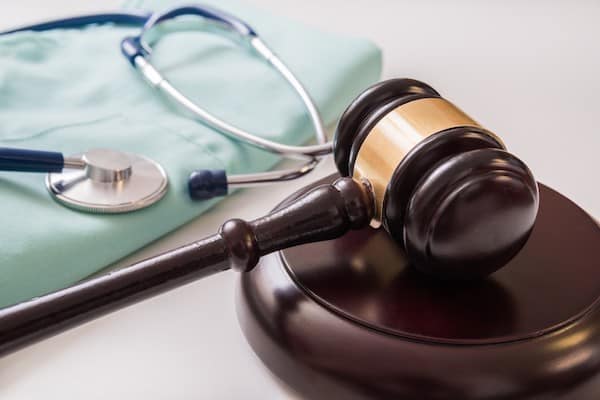When it comes to patient safety, nurses play a vital role. In fact, they are regularly the last line of defense against errors that could result in severe harm or even death. Yet, often due to the high-pressure nature of their work, nurses can also be susceptible to making mistakes. A new analysis of malpractice claims where nurses were directly involved in patient care reveals the most significant vulnerabilities. The research offers valuable insight for healthcare leaders looking for data-driven recommendations for managing risks and improving patient safety.
Serious patient harm and notable impact
More than 4,000 events that led to malpractice claims between 2018 and 2021 were analyzed. It was discovered that 18% of the claims included a nurse directly involved in patient care. The analysis also revealed that serious patient harm and notable financial and emotional impact occurred in cases where nurses were involved. In 37% of the claims, the patient died. An additional 10% resulted in significant disability, such as blindness or paraplegia. And nursing-related claims resulted in 26% of paid indemnity.
Certain responsibilities pose great vulnerability to patient safety
When it comes to nursing responsibilities that pose the most significant risk to patient safety, patient monitoring, fall prevention, medication administration and management, and pressure injury prevention top the list. Consider the following:
- Nurses have an essential role when it comes to monitoring patients for changes in condition, especially during critical moments in the patient’s health journey. Yet distractions and heavy workloads can lead to errors and miscommunication. Malpractice claims analysis shows that the majority – 45% – of adverse events involving nurses were related to patient monitoring. Close to half (49%) of those events resulted in death.
- Administering and managing medication for patients with comorbidities (who typically take many medications) can make patients more vulnerable to error. Medication administration and management accounted for 18% of the malpractice events involving nurses. Death was the result in 39% of those cases.
- Patient falls and injuries from falls also pose a significant vulnerability. Patient falls accounted for 14% of nursing-related malpractice claims, and 41% of these resulted in death.
- Pressure injuries – considered preventable adverse events – accounted for 10% of nursing-related malpractice claims. Death resulted in 52% of these cases.
- Each nursing-related malpractice claim involved challenges related to human-human collaboration, such as nurse-physician communication, team interaction, cultural vulnerabilities, inadequate staffing, and distractions. All contributed to the overall risk for patients and nurses.
Where there are vulnerabilities, there are opportunities for improvement
Society stands in debt to nurses for all they do to advance the health of patients and communities. To make nursing safer, it is important to glean insight from the data provided and acknowledge the vulnerabilities at play. In this case, analysis of malpractice claims reveals the following general principles for managing risk and improving safety for patients and the nurses caring for them.
First, the only way to reveal an organization’s most acute deficiencies is by encouraging the reporting of errors and near misses and by creating an open-communication culture. Immediately reported and properly analyzed errors and near misses offer a data-driven approach to reduced risk and can serve as triggers for improved processes and policies and an overall reduction in patient safety risks.
This includes taking a hard look at patient monitoring systems and practices. When a patient’s condition begins to deteriorate, there is no substitute for timely nursing observation, assessment, and prompt communication of the findings. Clear, reliable chain-of-command policies and structured communication frameworks offer the best safeguards to help improve and facilitate communication between nurses and providers.
It is also essential to consider the efficiencies technology and other practical tools can offer nurses and healthcare teams to improve patient safety. For example, technology that sends alerts when a patient’s vital signs deteriorate, coupled with a structured chain-of-command framework to report that deterioration, can help mitigate risk. Optimizing the safety features embedded in electronic health records and medical equipment to further facilitate communication of key patient findings for prompt attention and treatment can further reduce risk.
Finally, an emphasis on the importance of organizational patient safety culture to create a team atmosphere that delivers safe patient care is vital. Building cohesive teams in an environment where physicians, nurses, and other caregivers work collaboratively with respect and a shared mission of safe patient care will go far in advancing patient safety. A holistic approach is needed to create, train, support, and nurture the entire care team. This includes providing respect and continual care for nurses’ workplace wellness.
Susan L. Montminy, EdD, MPA, BSN, RN, CPHRM, is CPPS – Director, Risk Management, Coverys and Maryann Small, MBA is Senior Director, Risk Analytics, Coverys.
About Coverys
With over $3.5 billion in assets, Coverys is a leading provider of medical professional liability insurance for medical practitioners and health systems. Coverys provides a full range of healthcare liability insurance options, advanced risk analytics, and best-in-class risk mitigation and education resources to help clients anticipate, identify, and manage risk to reduce errors and improve outcomes. For more information, please visit Coverys.com








